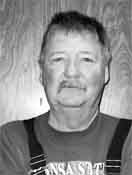 | Dr. William Morland graduated from Kansas State University in 1970 with a doctorate in veterinary medicine. He and his wife, Dr. Laura Morland, founded the hospital in 1974. Dr. Morland is a large-animal practitioner. He also owns the Flying M Ranch. He enjoys working with his own cattle and back grounding calves. His pets other than his cattle include two Cairn terrier named Bandit and Dandy. |
Animals, Reptiles & Insects
2013-03-01 14:56:31
What to expect in routine calving. When do I call the veterinarian?
A-A good rule of thumb is the calf should be born within two hours after the fluid or "water" bag appears. For a mature cow, it will probably be closer to one hour. If you do not know when the animal began labor, the most reliable way to assess if the animal is having trouble is the progress it is making. A cow or heifer should be making progress every 20-30 minutes that she is in active second- stage labor. If there is no progress obviously, there may be an abnormally positioned calf or other condition that blocks passage of the fetus and membranes so they are not visible.
Several factors associated with the cow influence calving difficulty (dystocia), the major ones being her age and pelvic size. First-calf heifers require more assistance in calving than do cows, because they are usually structurally smaller. Even 2- or 3-year-old cows can require assistance if their pelvic area remains small. About 5 percent of the calves at birth are in abnormal positions, such as forelegs or head turned back, breech, rear end position, sideways or rotated. This can be determined by the owner, who with careful preparations and cleanliness; examines the birth canal to assess the dilation of the cervix and position of the fetus. The normal position of a fetus is both front feet and head in the pelvis area and if the calf is not too large assistance can be given to deliver the calf. Your veterinarian should be called if you suspect any problems or if delivery is delayed by 2 to 3 hours once labor has started.
Once the calf has been delivered, it is important to encourage the cow to stand to reduce the chances of another serious problem - a uterine prolapse. This requires immediate veterinarian assistance. Also the placental membranes may not expel or separate from the uterine attachment. This should only be considered a problem if it continues for 3-5 days, Again a veterinarian can assist with this situation.
I hope that you will have a successful calving season with minor problems. Thank you, Bill


